Two Weeks in Kyushu, Part 1: Kagoshima and Sakurajima
I spent two weeks traveling the southernmost of the main Japanese islands, Kyushu, in March 2025. The region features beaches, active volcanoes, tropical islands, and hot springs that especially cater to lovers of good views and nature. In this portion I cover Kagoshima and Sakurajima.
You can view a map which includes all the places I mention in this post here.
Day 1: Getting to Kyushu
My gateway to Kyushu was through Kagoshima, which is located in southern Kyushu. I boarded Japan Airlines 655, the last direct flight from Haneda Airport. Though I received a message on the day of my flight with the message that “Flight may return to TOKYO HANEDA Airport due to poor visibility at KAGOSHIMA Airport”, my flight thankfully wasn’t cancelled, and I arrived at 9:20 PM without issues. (I speculate that a combination of low winter/spring temperatures and high humidity sometimes causes a heavy layer of fog.)
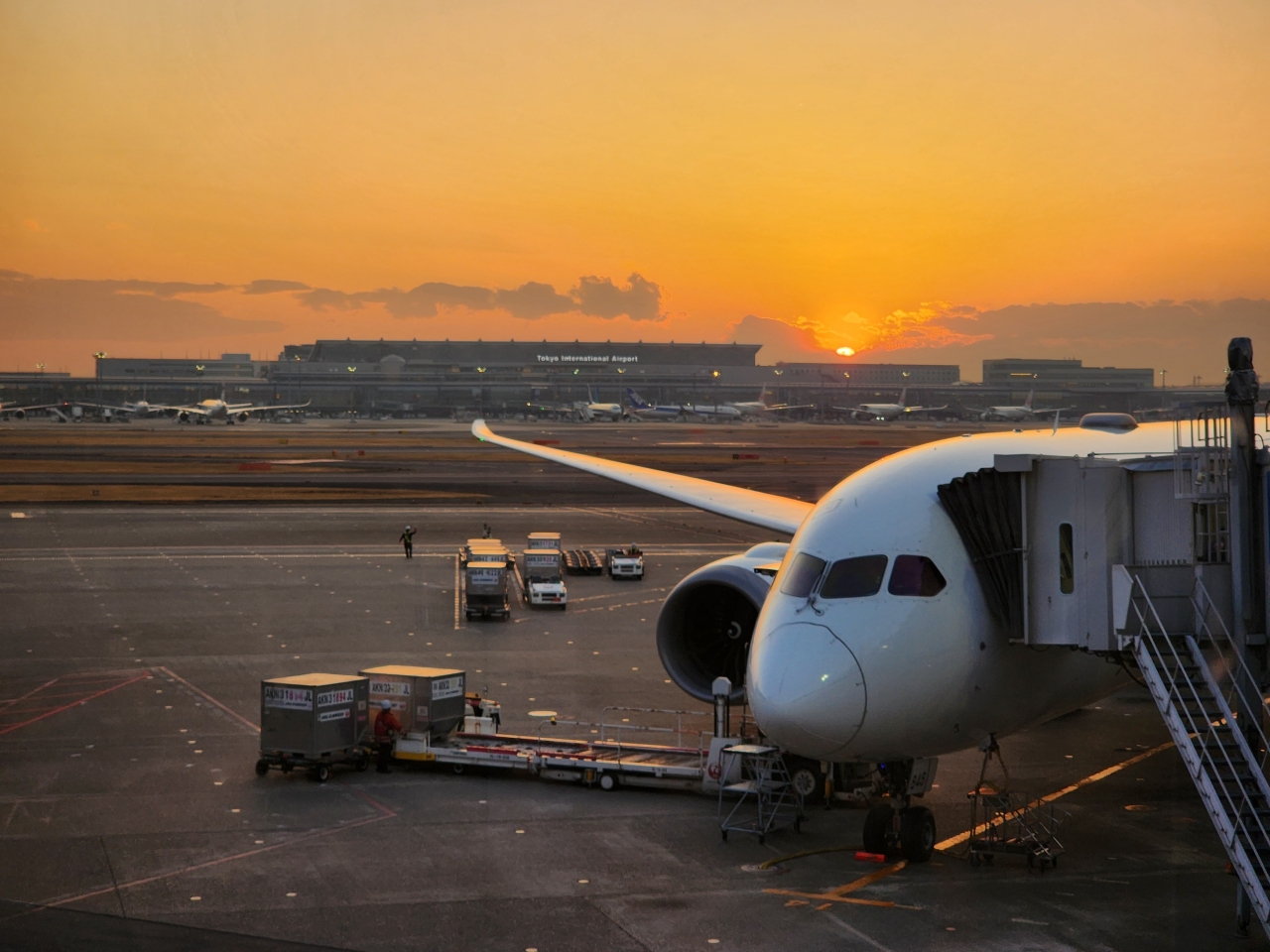
There was another potential issue: officially, the Kagoshima Airport Limousine Bus has its last departure at 9:30 PM, and I had arrived at 9:20 PM and had to pick up luggage from baggage claim. Luckily, there were multiple buses lined up for the 9:30 PM timeslot, and the buses operated by one of the bus companies, Nangoku Kotsu, even accept tap-to-pay with credit cards, so I didn’t need to waste time buying a ticket.
I got off at the Tenmonkan stop, which is the central shopping district and hub of nightlife for Kagoshima. I’d recommend staying here since it has convenient transportation access. I stayed at Kagoshima Plaza Hotel Tenmonkan, a reasonably priced business hotel. They had a “pillow buffet” with the comfiest pillows of any place I stayed at!
Day 2: Kagoshima and Sakurajima
I woke up early to catch a glimpse of the morning sun on Sakurajima, Japan’s most active volcano, which lies across the bay from Kagoshima. However, low-lying fog clouds blanketed the entire bay. Determined to make the best of my early morning, I tried to enter the fish market and see the day’s catch, but a security guard told me that entering the fish market is only open to those with reservations. I was kindly redirected to several neighboring restaurants which make breakfasts from the morning catch and stumbled upon this amazing aji fry set meal at Ichiba Shokudo Jonan.

I then set off for Sakurajima. The ferry is only a short walk from the fish market, and I kind of just meandered around expecting the clouds to suddenly lift, which of course didn’t happen (yet!). I purchased the CUTE day pass which offers unlimited travel on buses, ferries, and trams in Kagoshima. The ferry operates every 20 minutes during normal hours, so no planning or scheduling in advance is needed. While docking I greeted by a school of dolphins coming out of the water.
After disembarking I headed to walk along the Hakamagoshi-Karasujima Lava Trail, a pleasant ocean-side walking trail carved through lava flows from previous eruptions of Sakurajima. The start of the lava trail is also located at the site of some free open-air geothermal foot baths; I wasn’t so keen on the concept of sharing foot water with other people, so I passed. You can also rent bicycles at the Sakurajima Visitor Center and explore more of the island, but I found these a bit pricey.
Along the trail I saw lots of water birds diving and searching for food among the rocks, as well as a couple of Japanese grannies digging for clams along the coast. Just a short walk from the start is a hidden viewpoint.
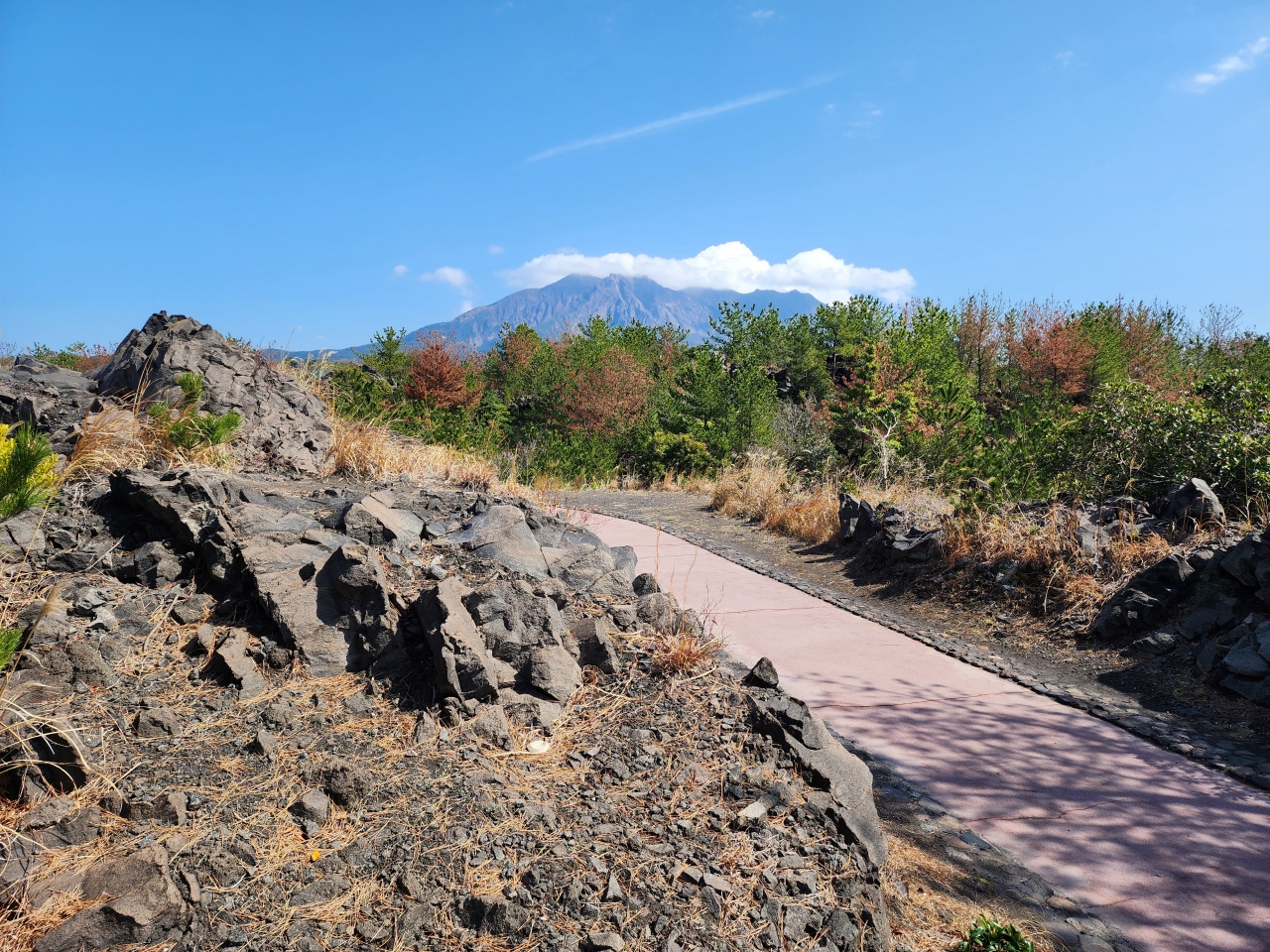
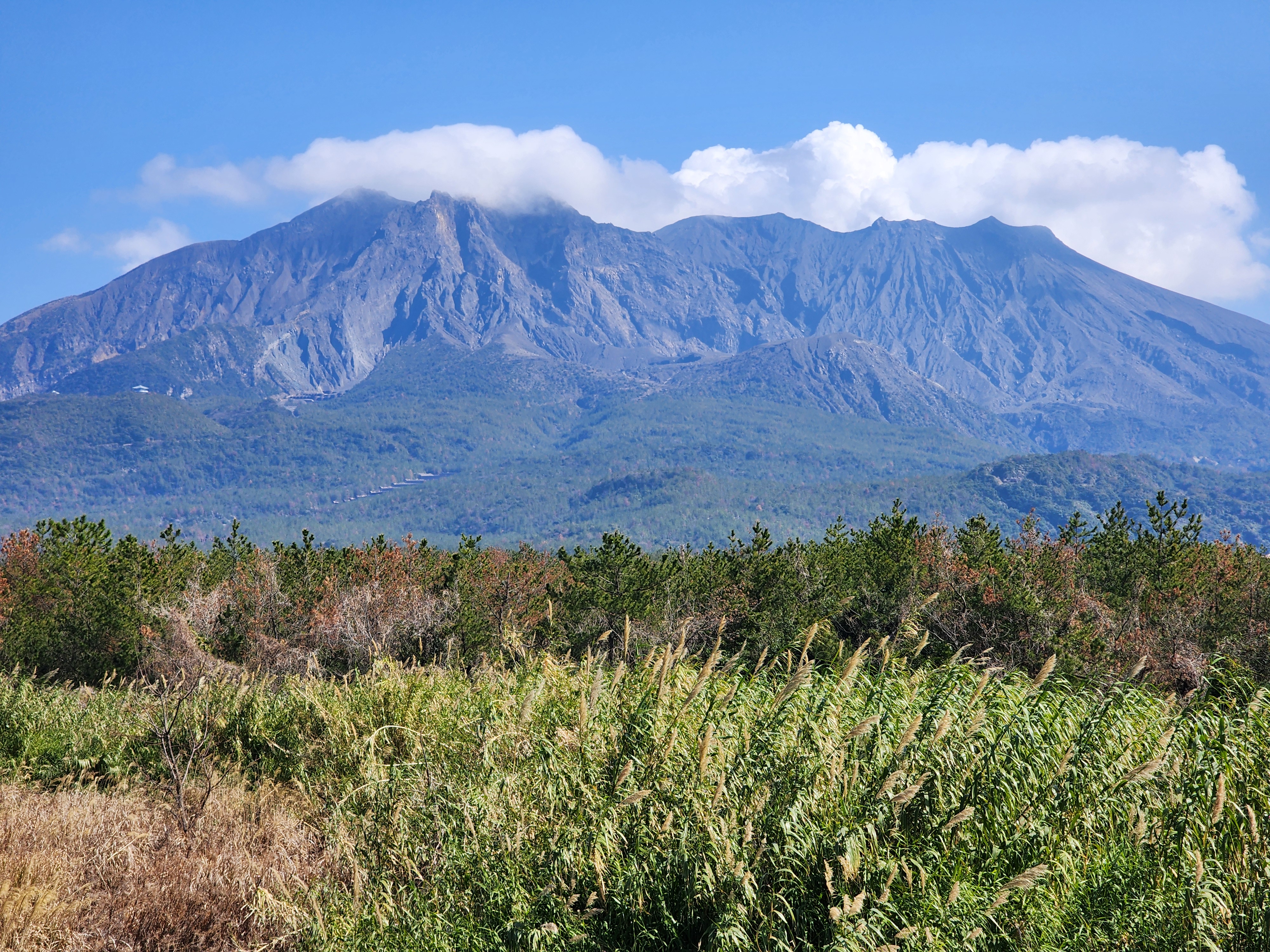
At the trail’s terminus is Karasujima Observatory, located at the site of an island which was buried under lava. There is a first good view of the volcano’s summit, although slightly obstructed by pine trees. The observatory is conveniently one of the stops on the Sakurajima Island View Bus (included with the CUTE day pass), which I rode to the Yunohira Observation Deck. In addition to the closest views of Sakurajima, you also great views over Kinko Bay looking toward the city. As luck would have it, the morning fog started lifting around this time.
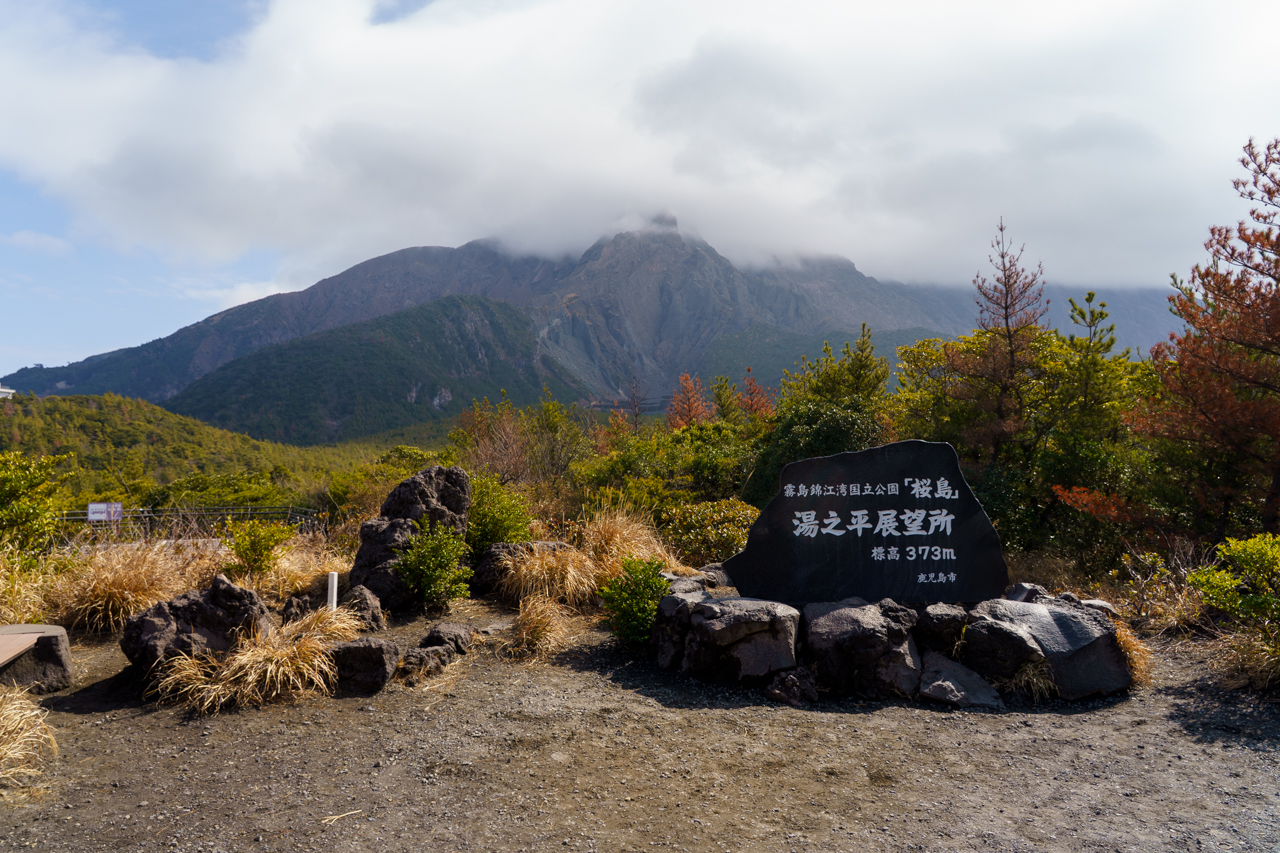
I returned back to the ferry terminal via the Island View Bus and rode one stop further to swing by a michi no eki, which are rest stops but on steroids. The Hinoshima Megumikan sells local treats such as Sakurajima daikon and Sakurajima mikan oranges. The mikan soft-serve is a must-try!
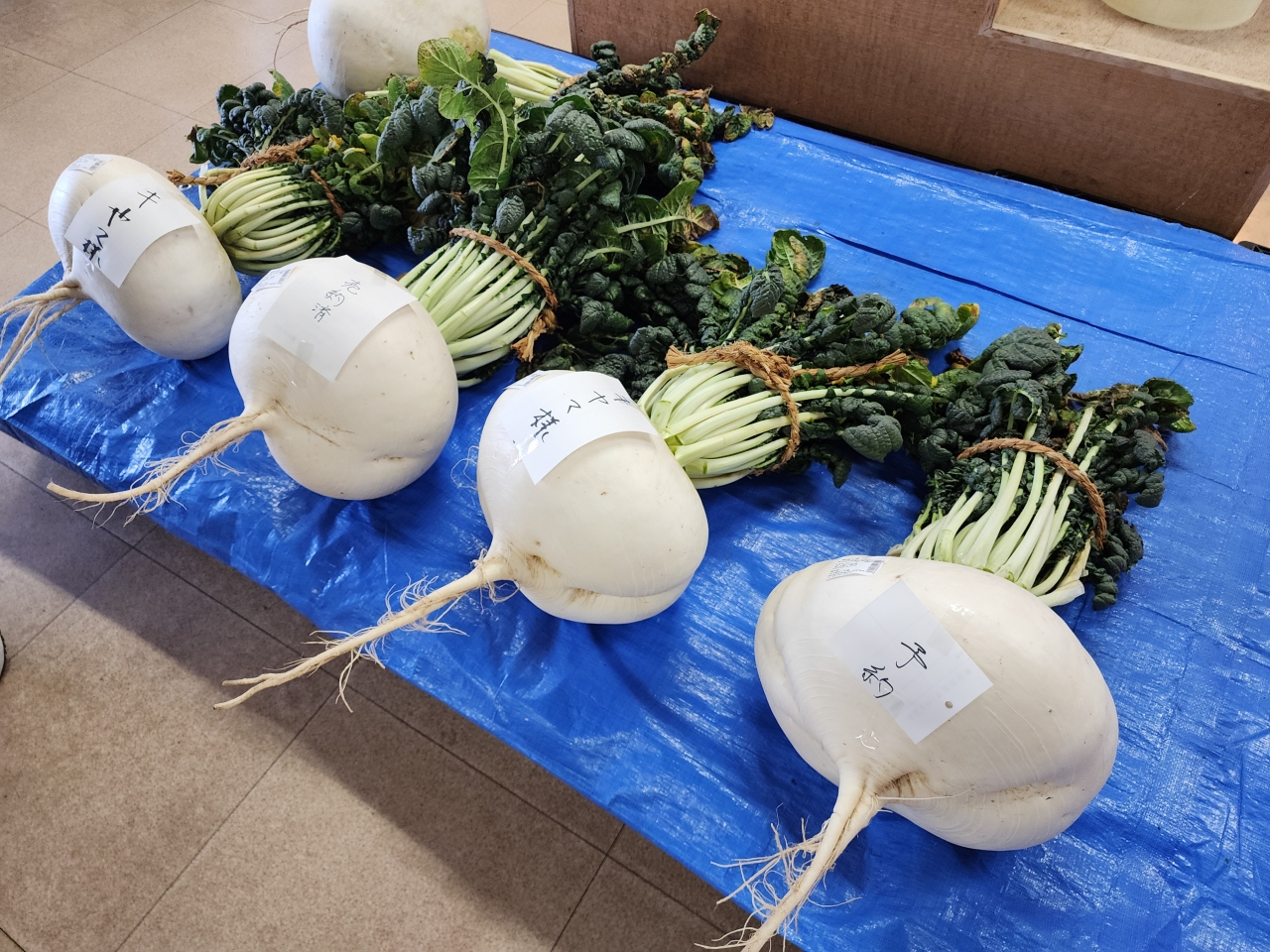
Around this time the clouds had virtually completely cleared up and the sun was quite strong even though it was only March; unfortunately I forgot my sunscreen. I went to two convenience stores and a grocery store, and nobody had sunscreen in stock! Sadly I ended up with a minor sunburn later that day…
I prayed at Tsukiyomi Shrine and nabbed a goshuin before returning to the city on ferry. By the way, the ferry actually has an udon restaurant that operates within the 10-15 minute ride. Talk about efficiency.
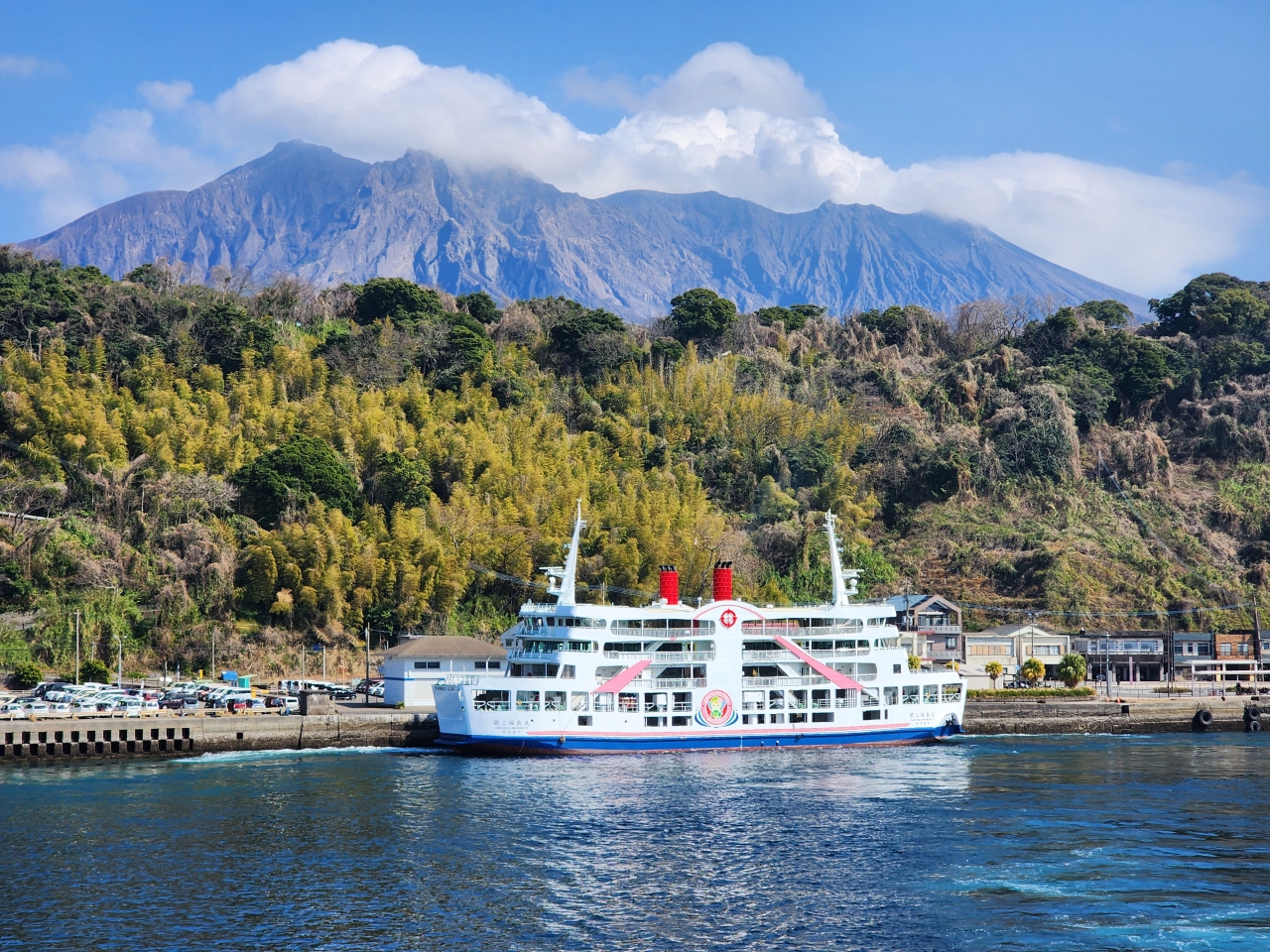
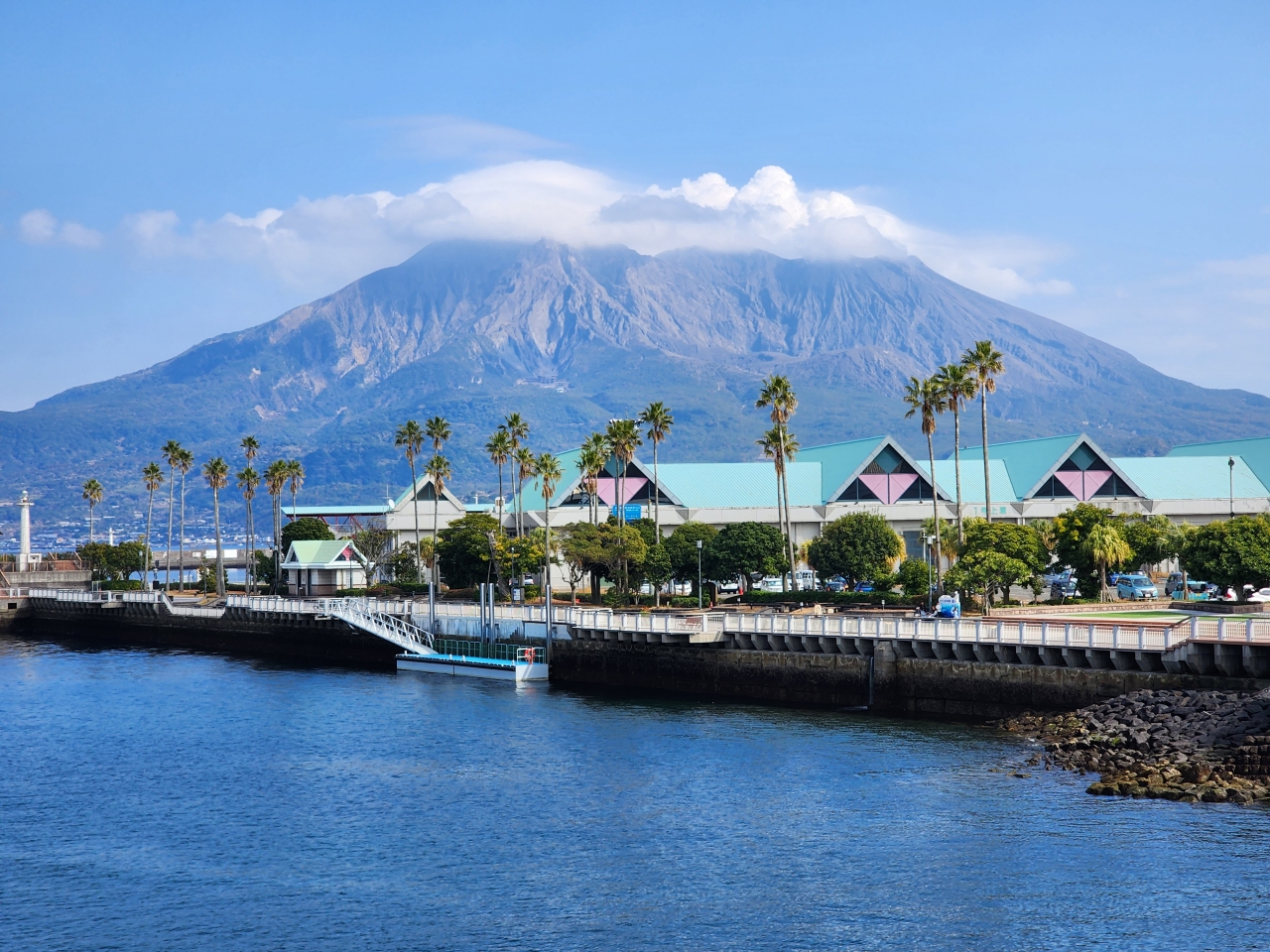
I then headed to Sengan-en, a picturesque Japanese garden which features Sakurajima in the backdrop. In my opinion this is one of the best Japanese gardens you can visit; the grounds had plum and cherry blossoms blooming when I visited, all in the backdrop of Sakurajima. While I got there via the city buses, there is actually now a unique oceanside train station operated by JR Kyushu that opened just after I visited.
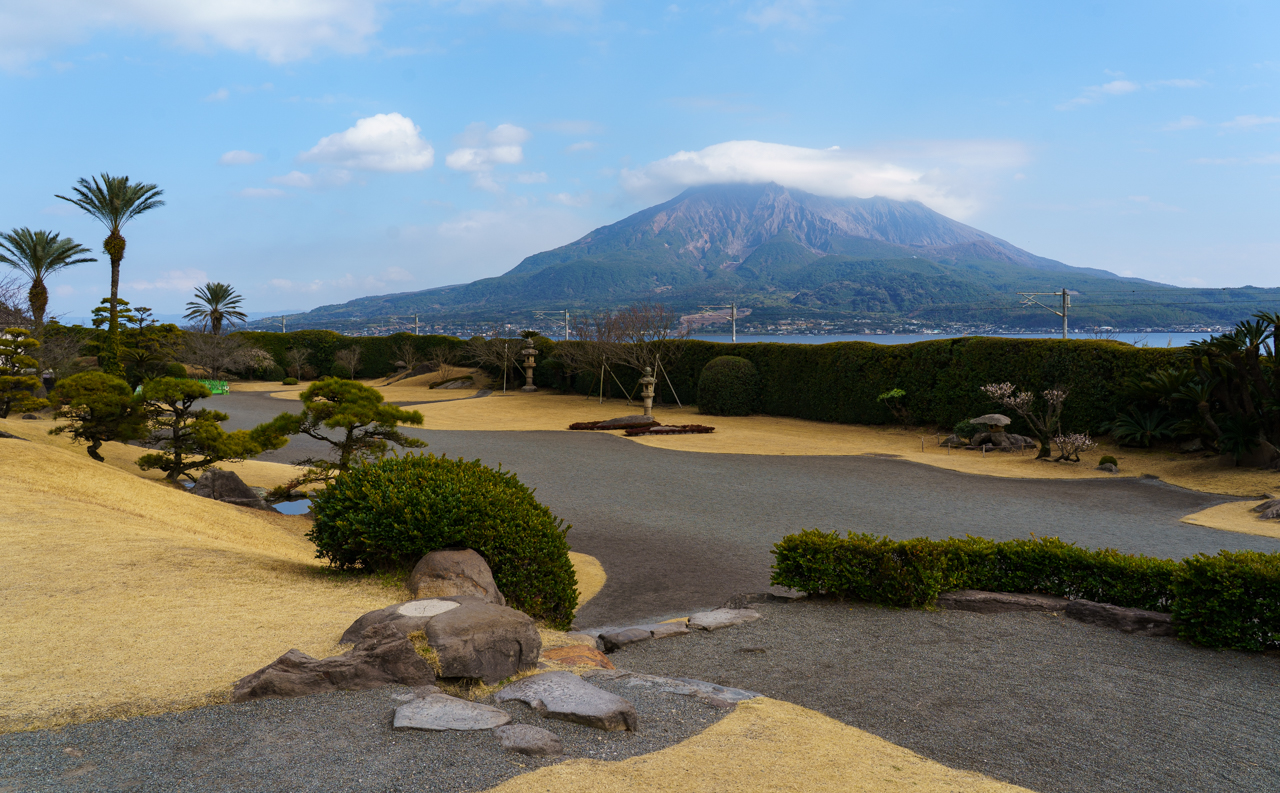
There’s also some former residences of the Shimazu Clan that can be toured, which are still the current proprietors of this garden (see Shimadzu Corporation). The villas borrow Japanese, Chinese, and Western influences. In the back of the garden there is also a cat shrine, the Nekogamisha.
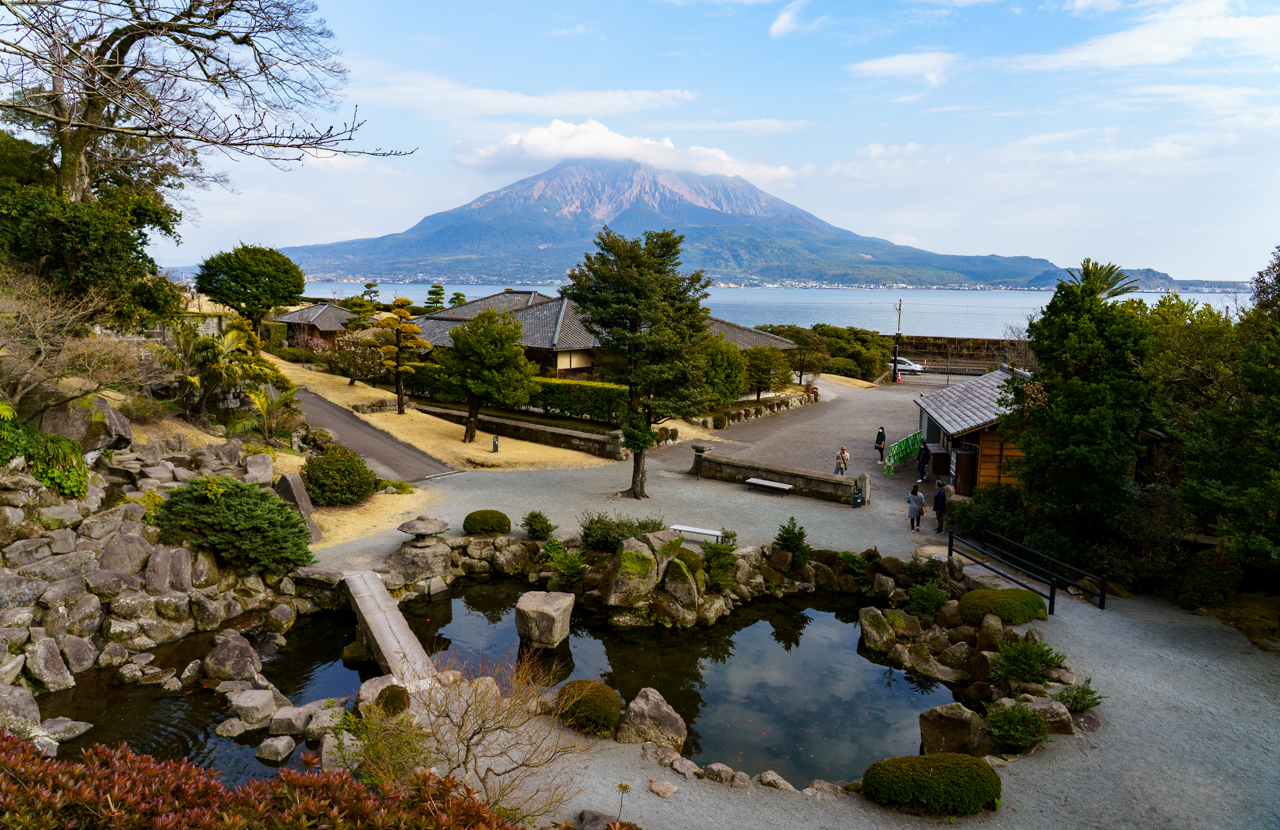
As I was leaving Sengan-en, I quickly realized that there was some daylight before sunset, so I quickly rushed to one last viewpoint of Sakurajima, Shiroyama Observatory. Although the Kagoshima City View Bus does have a line that goes to Shiroyama Observatory, I wouldn’t make it in time for the last bus, so I ran up some stairs that lead to the park. Apparently it’s also a historical site for some castle ruin? I didn’t have much time as I was trying to catch sunset (and was nearly out of breath by the time I got to the top) but the views along the path to the park are amazing, not to mention the actual view from the top of the observatory.
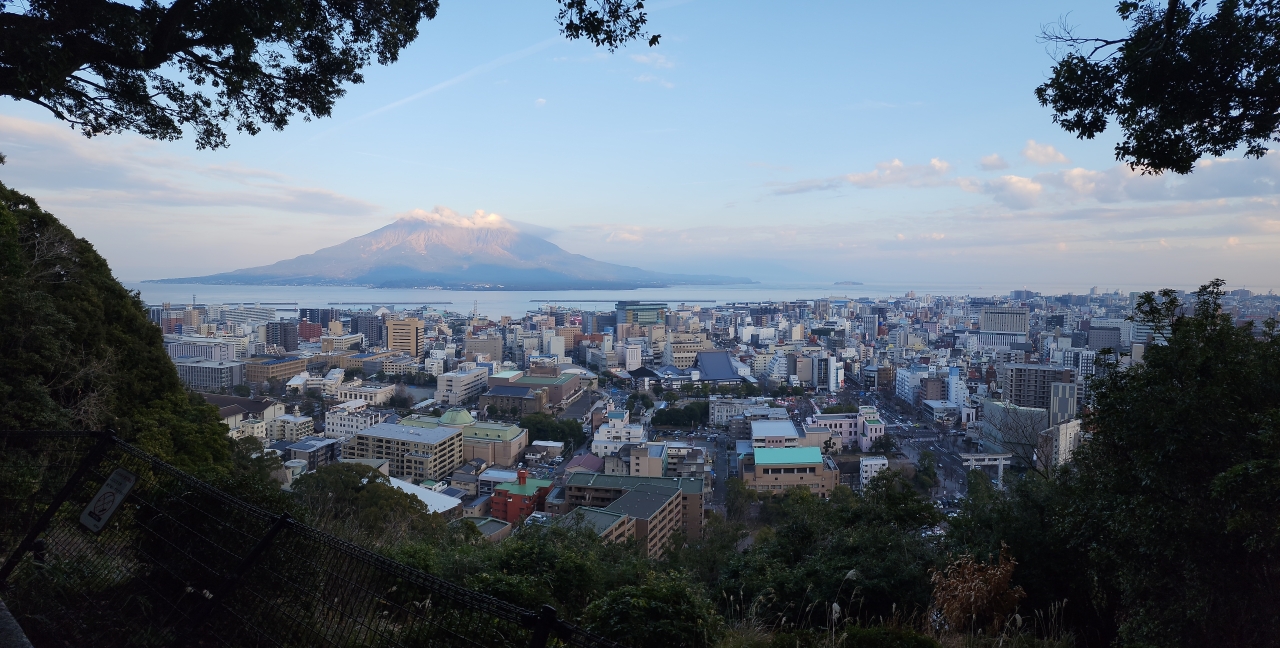
As the sky had completely cleared up at this point, I was able to see the volcano burping up ash. This happened every 10 minutes or so.
For dinner, I searched for kurobuta, which refers to pork from a particular breed special to Kagoshima. I waited 45 minutes to eat at the restaurant Kurobuta, which has delicious tonkatsu set meals from kurobuta pork. I also wanted to try a local shaved ice dessert called shirokuma, but no places were open by the time I finished dinner.
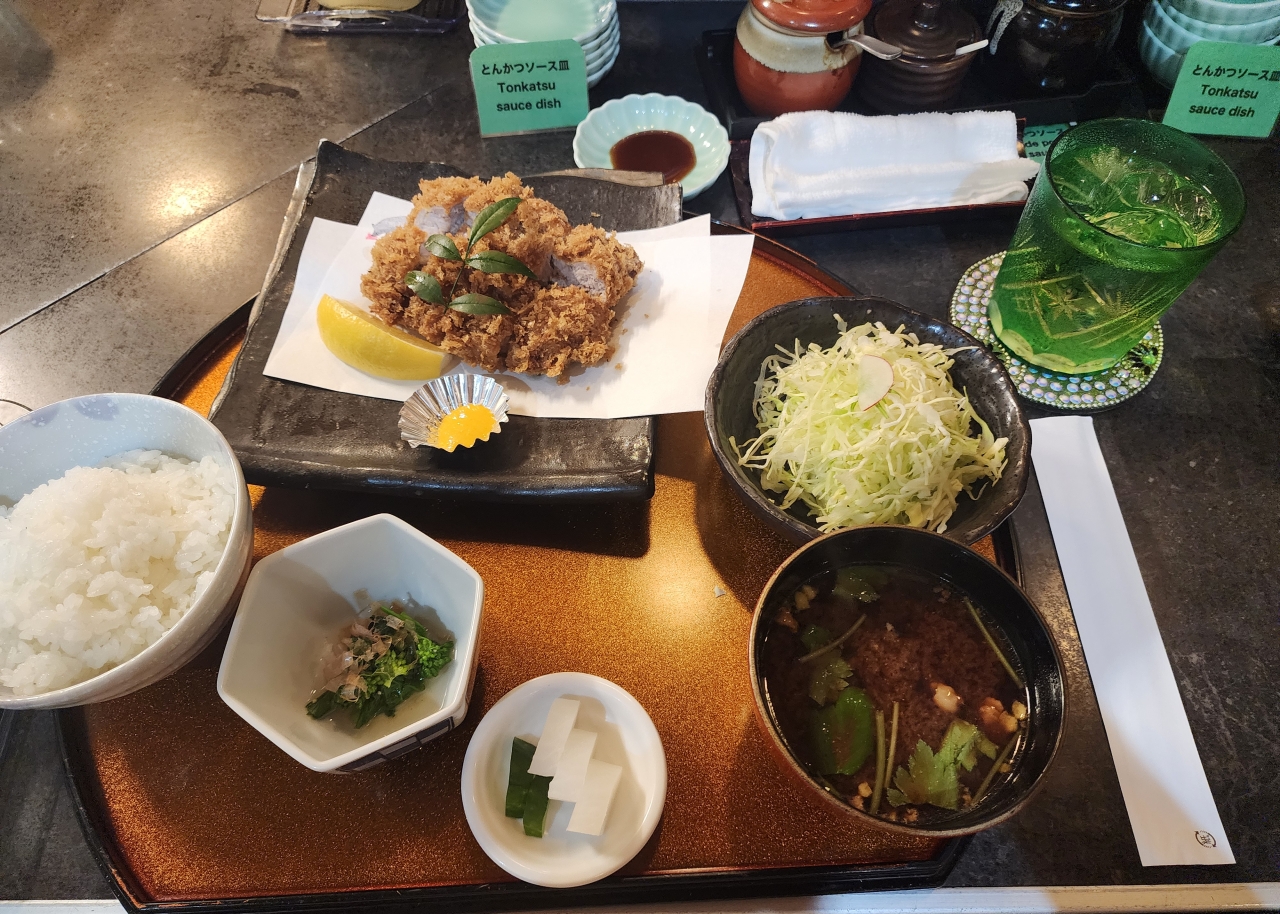
It turns out that I arrived the night before the Kagoshima Marathon, so there were a lot of festivities in the area, including taiko performances and…free shochu? Not my favorite alcohol, but it was fun to walk around the streets of Tenmonkan at night.
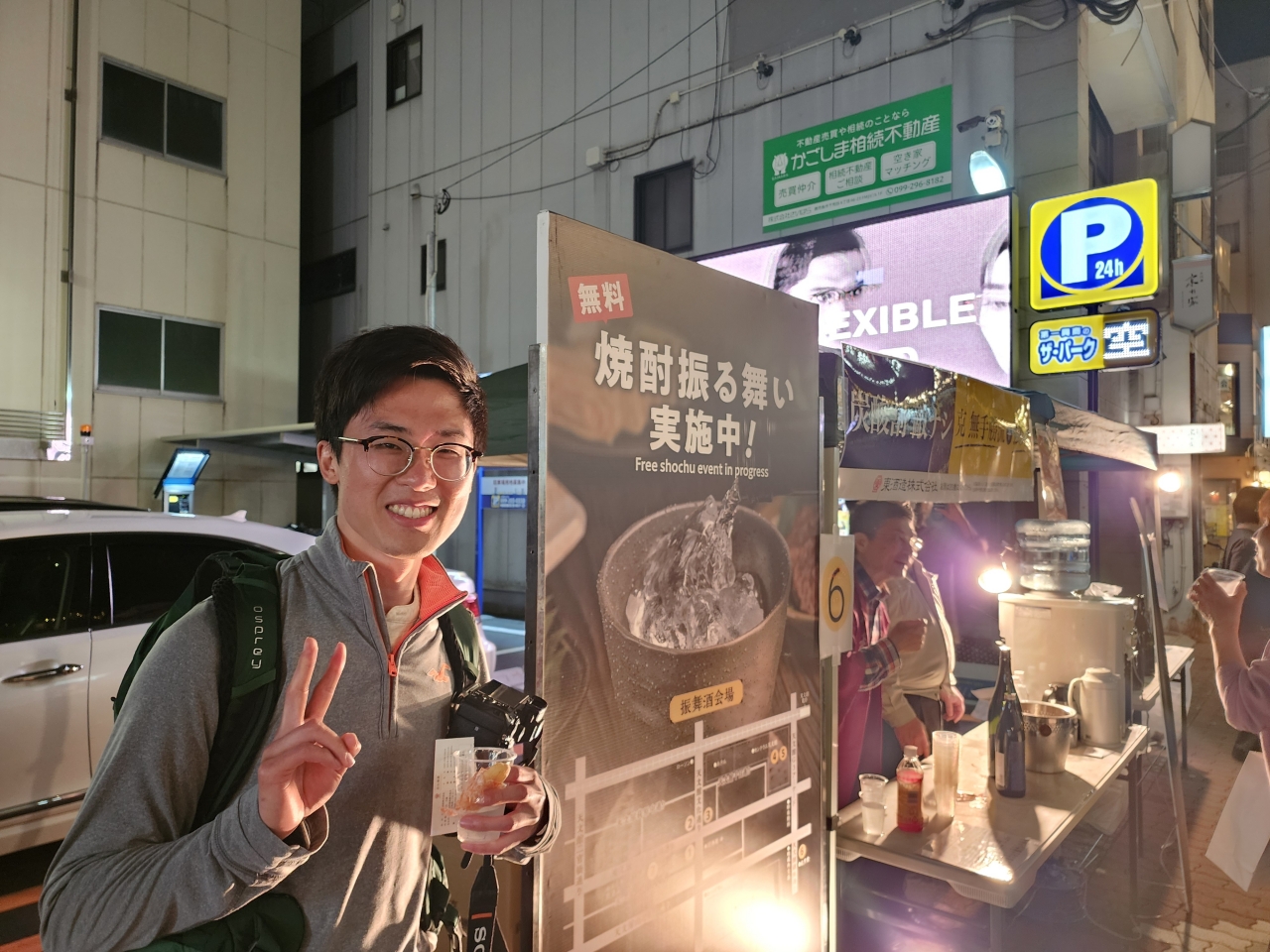
Overall I really loved Kagoshima and Sakurajima, and wished I had more time to spend in this area!





